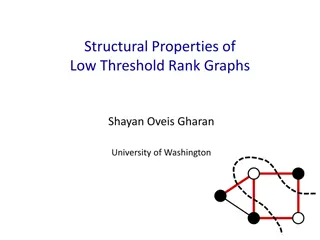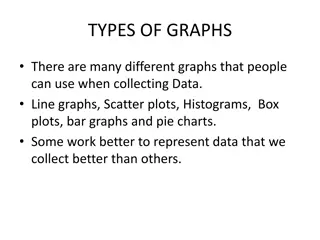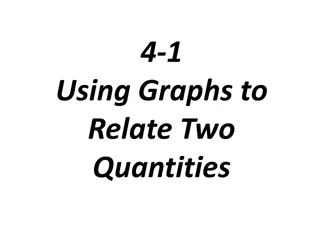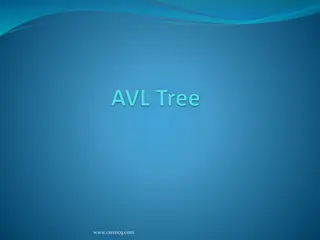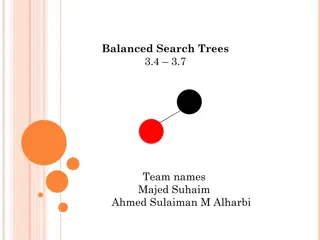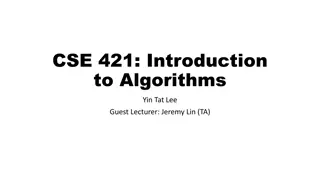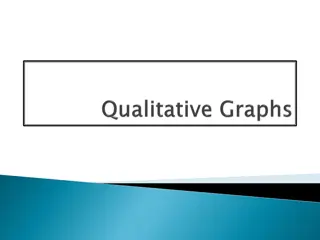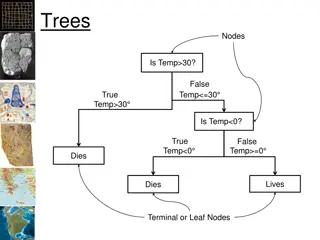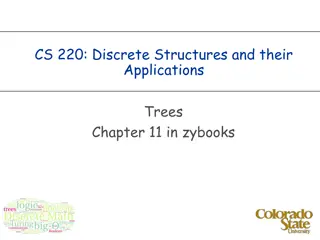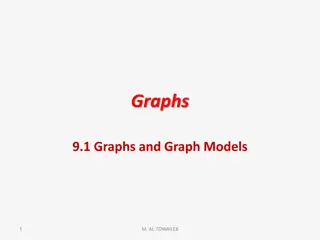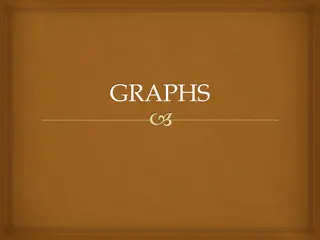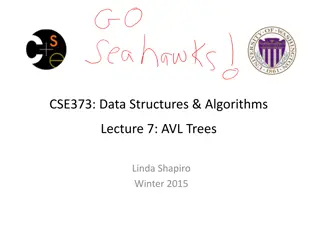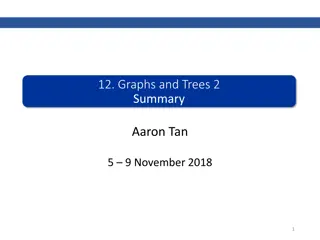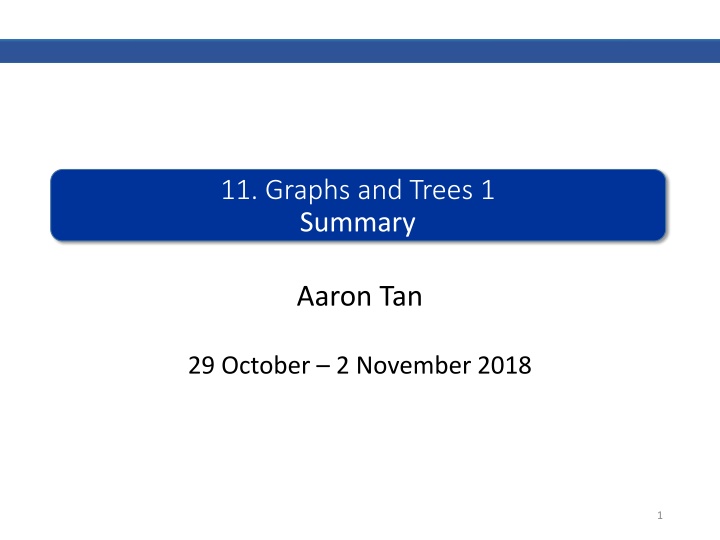
Graphs and Trees: Definitions, Properties, and Representations
Explore the fundamental concepts of graphs, including vertices, edges, directed and simple graphs, complete graphs, subgraphs, Euler circuits, and more. Dive into matrix representations, planar graphs, and graph isomorphism for a comprehensive overview.
Download Presentation

Please find below an Image/Link to download the presentation.
The content on the website is provided AS IS for your information and personal use only. It may not be sold, licensed, or shared on other websites without obtaining consent from the author. If you encounter any issues during the download, it is possible that the publisher has removed the file from their server.
You are allowed to download the files provided on this website for personal or commercial use, subject to the condition that they are used lawfully. All files are the property of their respective owners.
The content on the website is provided AS IS for your information and personal use only. It may not be sold, licensed, or shared on other websites without obtaining consent from the author.
E N D
Presentation Transcript
11. Graphs and Trees 1 Summary Aaron Tan 29 October 2 November 2018 1
Summary 11. Graphs and Trees 1 10.1 Graphs: Definitions and Basic Properties Vertices, edges, directed graph, simple graph, complete graph, complete bipartite graph, subgraph, degree The Handshake theorem 10.2 Trails, Paths, and Circuits Walk, trail, path, closed walk, circuit, simple circuit Connectedness, connected component Euler circuit, Hamiltonian circuit 10.3 Matrix Representations of Graphs Adjacency matrix, matrices and connected components Matrix multiplication, identity matrix, power of a matrix, walks of length N 10.4 Planar Graphs Graph Isomorphism Planar Graphs Euler s Formula 2
Summary 10.1 Definitions and Basic Properties A graph G consists of a set of vertices V(G), and a set of edges E(G). We also write G = {V, E}. V = {v1, v2, v3, v4, v5, v6, v7} E = {e1, e2, e3, e4, e5, e6} e1 = {v1, v4} e2 = e3 = {v2, v3} e4 = {v3, v4} e5 = {v4, v4} e6 = {v6, v7} Edges incident on v4: e1, e4 and e5 Vertices adjacent to v4: v1, v3 and v4 Edges adjacent to e2: e3 and e4 3
Summary 10.1 Definitions and Basic Properties Definition: Directed Graph A directed graph, or digraph, G, consists of 2 finite sets: a nonempty set V(G) of vertices and a set D(G) of directed edges, where each edge is associated with an ordered pair of vertices called its endpoints. If edge e is associated with the pair (v, w) of vertices, then e is said to be the (directed) edge from v to w. We write e = (v, w). Definition: Simple Graph A simple graph is an undirected graph that does not have any loops or parallel edges. Definition: Complete Graph A complete graph on n vertices, n > 0, denoted Kn, is a simple graph with n vertices and exactly one edge connecting each pair of distinct vertices. 4
Summary 10.1 Definitions and Basic Properties Definition: Complete Bipartite Graph A complete bipartite graph on (m, n) vertices, where m, n > 0, denoted Km,n, is a simple graph with distinct vertices v1, v2, , vm, and w1, w2, , wn that satisfies the following properties: For all i, k= 1, 2, , m and for all j, l= 1, 2, , n, 1. There is an edge from each vertex vi to each vertex wj. 2. There is no edge from any vertex vi to any other vertex vk. 3. There is no edge from any vertex wj to any other vertex wl. Definition: Subgraph of a Graph A graph H is said to be a subgraph of graph G iff every vertex in H is also a vertex in H, every edge in H is also an edge in G, and every edge in H has the same endpoints as it has in G. 5
Summary 10.1 Definitions and Basic Properties Definition: Degree of a Vertex and Total Degree of a Graph Let G be a graph and v a vertex of G. The degree of v, denoted deg(v), equals the number of edges that are incident on v, with an edge that is a loop counted twice. The total degree of G is the sum of the degrees of all the vertices of G. Theorem 10.1.1 The Handshake Theorem If the vertices of G are v1, v2, , vn, where n 0, then the total degree of G = deg(v1) + deg(v2) + + deg(vn) = 2 (the number of edges of G). Corollary 10.1.2 The total degree of a graph is even. Proposition 10.1.3 In any graph there are an even number of vertices of odd degree.
Summary 10.2 Trails, Paths, and Circuits Definitions Let G be a graph, and let v and w be vertices of G. A walk from v to w is a finite alternating sequence of adjacent vertices and edges of G. Thus a walk has the form v0 e1 v1 e2 vn-1 envn, where the v s represent vertices, the e s represent edges, v0=v, vn=w, and for all i {1, 2, , n}, vi-1 and vi are the endpoints of ei. The trivial walk from v to v consists of the single vertex v. A trail from v to w is a walk from v to w that does not contain a repeated edge. A path from v to wis a trail that does not contain a repeated vertex. A closed walk is a walk that starts and ends at the same vertex. A circuit (or cycle) is a closed walk that contains at least one edge and does not contain a repeated edge. A simple circuit (or simple cycle) is a circuit that does not have any other repeated vertex except the first and last. 7
Summary 10.2 Trails, Paths, and Circuits 8
Summary 10.2 Trails, Paths, and Circuits Definition: Connectedness Two vertices v and w of a graph G are connected iff there is a walk from v to w. The graph G is connected iff given any two vertices v and w in G, there is a walk from v to w. Symbolically, G is connected iff vertices v, w V(G), a walk from v to w. Definition: Connected Component A graph H is a connected component of a graph G iff 1. The graph H is a subgraph of G; 2. The graph H is connected; and 3. No connected subgraph of G has H as a subgraph and contains vertices or edges that are not in H. 9
Summary 10.2 Trails, Paths, and Circuits Definitions: Euler Circuit and Eulerian Graph Let G be a graph. An Euler circuit for G is a circuit that contains every vertex and every edge of G. That is, an Euler circuit for G is a sequence of adjacent vertices and edges in G that has at least one edge, starts and ends at the same vertex, uses every vertex of G at least once, and uses every edge of G exactly once. An Eulerian graph is a graph that contains an Euler circuit. Theorem 10.2.2 If a graph has an Euler circuit, then every vertex of the graph has positive even degree. Contrapositive Version of Theorem 10.2.2 If some vertex of a graph has odd degree, then the graph does not have an Euler circuit. 10
Summary 10.2 Trails, Paths, and Circuits Theorem 10.2.3 If a graph G is connected and the degree of every vertex of G is a positive even integer, then G has an Euler circuit. Theorem 10.2.4 A graph G has an Euler circuit iff G is connected and every vertex of G has positive even degree. Definition: Euler Trail Let G be a graph, and let v and w be two distinct vertices of G. An Euler trail/path from v to w is a sequence of adjacent edges and vertices that starts at v, ends at w, passes through every vertex of G at least once, and traverses every edge of G exactly once. Corollary 10.2.5 Let G be a graph, and let v and w be two distinct vertices of G. There is an Euler trail from v to w iff G is connected, v and w have odd degree, and all other vertices of G have positive even degree. 11
Summary 10.2 Trails, Paths, and Circuits Definitions: Hamiltonian Circuit and Hamiltonian Graph Given a graph G, a Hamiltonian circuit for G is a simple circuit that includes every vertex of G. That is, a Hamiltonian circuit for G is a sequence of adjacent vertices and distinct edges in which every vertex of G appears exactly once, except for the first and the last, which are the same. A Hamiltonian graph (also called Hamilton graph) is a graph that contains a Hamiltonian circuit. Proposition 10.2.6 If a graph G has a Hamiltonian circuit, then G has a subgraph H with the following properties: 1. H contains every vertex of G. 2. H is connected. 3. H has the same number of edges as vertices. 4. Every vertex of H has degree 2. 12
Summary 10.3 Matrix Representations of Graphs Definition: Adjacency Matrix of a Directed Graph Let G be a directed graph with ordered vertices v1, v2, vn. The adjacency matrix of G is the n n matrix A = (???) over the set of non-negative integers such that ??? = the number of arrows from vi to vj for all i, j= 1, 2, , n. Definition: Adjacency Matrix of an Undirected Graph Let G be an undirected graph with ordered vertices v1, v2, vn. The adjacency matrix of G is the n n matrix A = (???) over the set of non-negative integers such that ??? = the number of edges connecting vi and vj for all i, j= 1, 2, , n. Definition: Symmetric Matrix An n n square matrix A = (???) is called symmetric iff for all i, j= 1, 2, , n, ???= ???. 13
Summary 10.3 Matrix Representations of Graphs Theorem 10.3.1 Let G be a graph with connected components G1, G1, , Gk. If there are ni vertices in each connected component Gi and these vertices are numbered consecutively, then the adjacency matrix of G has the form: ?1 O O O ?2 O O O ?3 O O O where each Ai is ni ni adjacency matrix of Gi, for all i= 1, 2, , k, and the O s represent matrices whose entries are all 0s. O O O O O O O ?? Definition: nth Power of a Matrix For any n n matrix A, the powers of A are defined as follows: A0 = I where I is the n n identity matrix An = A An 1for all integers n 1 Theorem 10.3.2 If G is a graph with vertices v1, v2, , vm and A is the adjacency matrix of G, then for each positive integer n and for all integers i, j= 1, 2, , m, the ij-th entry of An = the number of walks of length n from vi to vj. 14
Summary 10.4 Planar Graphs Definition: Isomorphic Graph Let G and G' be graphs with vertex sets V(G) and V(G') and edge sets E(G) and E(G') respectively. Gis isomorphic to G'iff there exist one-to-one correspondences g: V(G) V(G') and h: E(G) E(G') that preserve the edge-endpoint functions of G and G' in the sense that for all v V(G) and e E(G), vis an endpoint of e g(v) is an endpoint of h(e). Theorem 10.4.1 Graph Isomorphism is an Equivalence Relation Let S be a set of graphs and let R be the relation of graph isomorphism on S. Then R is an equivalence relation on S. Definition: Planar Graph A planar graph is a graph that can be drawn on a (two-dimensional) plane without edges crossing. Euler s Formula For a connected planar simple graph G = (V, E) with e = |E| and v = |V|, if we let f be the number of faces, then f = e v + 2. 15
END OF FILE 16






